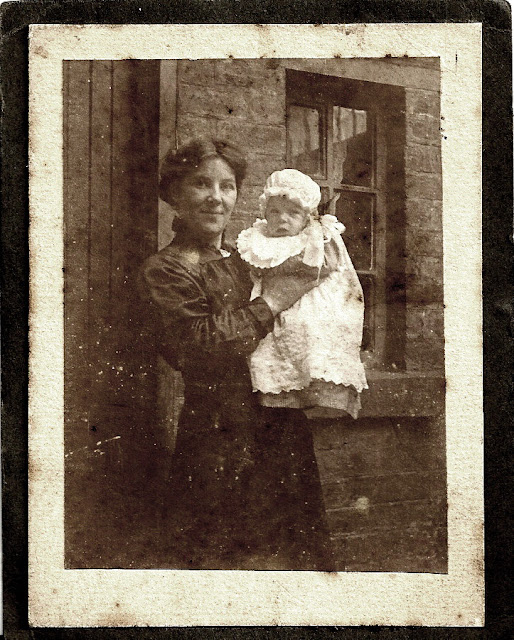Edward Jandy’s Book: Tracking Down a Copy of Charles Horton Cooley: His Life and His Social Theory
Edward Jandy: 1899-1980
While cleaning out my mother-in-law Laurel Jandy Aird’s
house following her death a few years ago, we found a copy of a book written by
her father in 1942. I had never heard about Edward Jandy’s book, a biography
titled Charles Horton Cooley: His Life
and His Social Theory, and was curious. Another family member kept Laurel’s
copy, so when we returned home, I decided to acquire a copy so our children
would have their great-grandfather’s book. After some searching online, I found
a copy that was in good condition for a reasonable price of $14.99. I bought
it, and it has become a favorite find.
I think you can learn a lot about a person by reading their
written thoughts. I have barely started reading Prof. Jandy’s book, but it has already
been illuminating. In addition, finding the book prompted me to do further
research on Edward, and I turned up a research paper and several book reviews
on sociology texts and books that he penned. I am just beginning to understand
the breadth of his research and interests.
To provide some background, Ed was born on May 22, 1899 to parents
Emanuel Jandesjek and Emily Tomsche Jandesjek. The couple had immigrated to
Chicago from the Bohemian area of Czechoslovakia. Ed was the second youngest of
their nine children.
Money was tight for the family, particularly after Emanuel died in 1905 when Ed was only five years old. Most of Ed’s siblings left school early to start working. However, Ed chose to put himself through college—not an easy task in the early twentieth century. He began his education at Blackburn College in Carlinville, Illinois, and completed his undergraduate degree at Coe College in Iowa. From there he pursued graduate degrees in psychology and sociology at the University of Michigan, beginning in 1927. At some point, he "Americanized" his surname from "Jandesjek" to "Jandy".
At Michigan, he studied under Charles
Horton Cooley and was greatly influenced by him. Following Cooley's death, Ed sought and received permission
to write the biography and analysis of Cooley’s sociological theory as his PhD
thesis. The book was published in 1942 and reprinted in 1969.
 |
| Dr. Edward Jandy, November 1940 |
It is interesting to read a non-fiction book from the 1940s, noting how the genre has changed over eighty years. The language in Ed's book is a bit more
flowery and more abstruse than I am used to. Of course this is partly due to the fact that the
book was written as a PhD thesis with an intended audience of fellow sociology
PhDs rather than the general public. The most striking difference was Ed’s
insertion of his own feelings and reactions in the text using the awkward
reference “the author” or "this writer"; there was less emphasis on trying to make the
text appear factual and without bias. Ed’s personality and attitudes were much
more apparent than in non-fiction and biographies of current times.
 |
| Title page of Ed's book, held open with an Ethiopian knife Ed brought home from his time working in Ethiopia later in his career. |
The book also shows me how the field of sociology has
changed. During the period Ed was pursuing his doctorate, the leaders in the
field were trying to shift the emphasis in the field of social science away from the
humanities toward a true science. From what I have gleaned thus far, Ed was drawn initially
to the “social” or humanities side of the field, having come from an undergrad
study of philosophy. Cooley was opposed to the push for a more scientific
approach, which Ed agreed with when he first started his doctorate. However, by
the time he was writing his doctoral thesis, he saw the benefits of using
statistics and a more scientific approach to sociological problems. The
following passage from the book’s final chapter demonstrates this change in his
views:
“We come now to one of the most crucial problems that Cooley
ever posed. It has to do with the making of sociology into a philosophy as well
as an art. However ardent a disciple the writer may be, he is frankly of the
opinion that here Cooley raised as many, or more problems than he solved…[T]here
are some dangers in making sociology a philosophy and also an art…a sociology
of this sort may find itself spread over a tremendous surface with
corresponding thinness. It may find itself speculating to no definite purpose…”
“In our time, sociology can no longer afford to be
autobiographical nor can sociologists presume that their own lives afford
materials enough for the science they need.”
“If the author appears to be mildly skeptical and critical
of some of Cooley’s views on science and method, it is hardly because he is not
basically sympathetic with them. It is rather because he feels seriously that
this whole problem of sociology also taking on the role of philosophy and art
is one so crucial that it needs to be worked out much more adequately than is
has been up to now.”
I am so glad to have found a copy of Ed’s book and to be
able to understand what drew him to the field of sociology. I look forward to
learning more about his work and research.
Sources:
Charles Horton Cooley:
His Life and His Social Theory. Edward C. Jandy. Copyright 1942. Reprint
1969, Octogon Books, New York.























